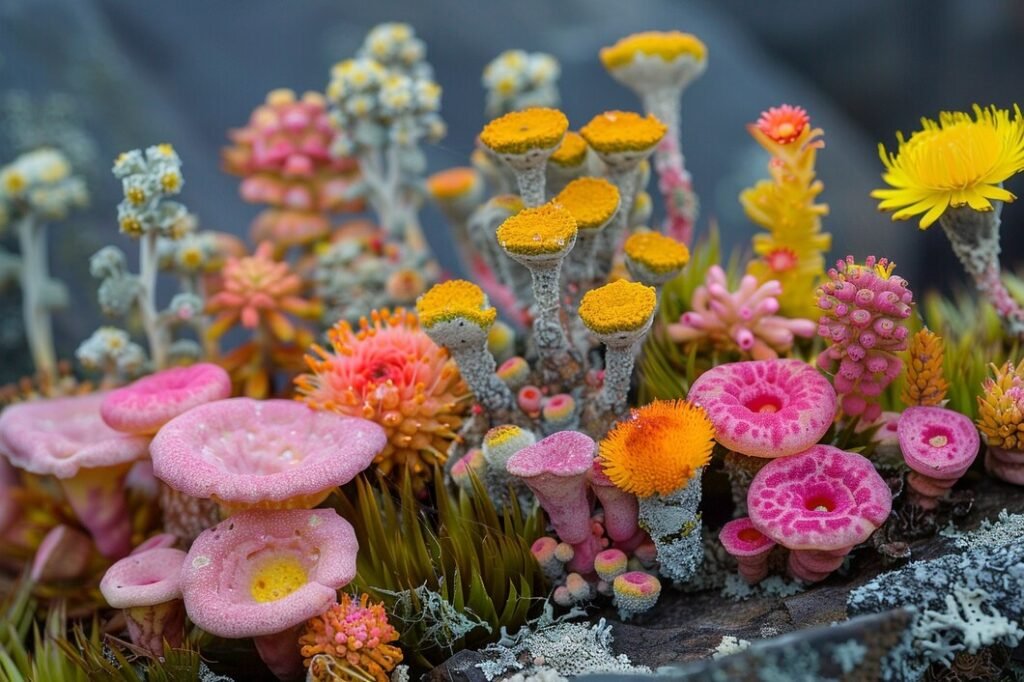Wildflowers are more than just plants growing freely in the wild; they are nature’s colorful and untamed gifts that play vital roles in our ecosystems. From dazzling fields that attract photographers to essential pollinators that sustain wildlife, wildflowers deserve their time in the spotlight. In this blog post, we’ll explore what wildflowers are, their types, why they’re important, and how you can even plant them in your own garden. Let’s dive in!
What Are Wildflowers?
Wildflowers are flowering plants that grow naturally without human intervention. Unlike cultivated garden flowers, wildflowers adapt to their local environment and flourish in the wild, whether in forests, fields, mountains, or meadows. They range from delicate daisies and vibrant poppies to tiny forget-me-nots.
Fun Fact: Wildflowers are often the first plants to bloom after disturbances like wildfires, showcasing their resilience and beauty.
Types of Wildflowers
- Annual Wildflowers
- Characteristics: These wildflowers complete their life cycle in one growing season. They germinate, flower, produce seeds, and die within a year.
- Examples: Cornflowers and California poppies are popular annuals known for their vibrant displays.
- Perennial Wildflowers
- Characteristics: Perennials return year after year. Although they may not flower as prolifically as annuals during their first season, they make up for it with long-lasting growth.
- Examples: Black-eyed Susans and purple coneflowers are common perennials.
- Biennial Wildflowers
- Characteristics: These take two years to complete their life cycle. In the first year, they grow roots and leaves, and in the second, they bloom and seed.
- Examples: Foxgloves are striking biennials that add height and charm to gardens.
Why Are Wildflowers Important?
Wildflowers do much more than simply add beauty to the landscape:
- Support Pollinators: Bees, butterflies, and birds rely on wildflowers for food. The nectar and pollen from wildflowers help sustain these crucial species.
- Prevent Soil Erosion: Their roots help stabilize the soil, preventing erosion and supporting soil health.
- Biodiversity: Wildflowers encourage a diverse ecosystem by providing habitats and food sources for various animals.
- Climate Resilience: Many wildflowers are drought-tolerant, making them essential for maintaining greenery in arid climates.
Did You Know? Monarch butterflies depend on milkweed, a type of wildflower, for their life cycle. Without it, their population could suffer drastically.
Growing Wildflowers in Your Garden
Want to invite a splash of natural color into your garden? Here’s a simple guide to planting wildflowers:
- Choose the Right Mix: Select wildflower seeds that are native to your region for the best results. Native plants are adapted to local climate and soil conditions.
- Prepare the Soil: Clear the area of weeds and till the soil lightly. Wildflowers prefer well-drained soil but can adapt to a variety of conditions.
- Scatter and Press: Evenly distribute the seeds and press them into the soil. Water gently after planting.
- Wait and Watch: Most wildflowers will sprout within 2-3 weeks, but full blooms may take longer depending on the variety.
Pro Tip: Mix wildflower seeds with sand for even distribution when sowing over large areas.
Top Wildflowers to Plant and Why
- Black-eyed Susan: A hardy perennial that adds a splash of bright yellow.
- Lupine: Known for its tall, spiky blooms in shades of blue and purple.
- California Poppy: The state flower of California that spreads easily and provides a burst of orange.
- Butterfly Weed: True to its name, it attracts monarch butterflies.
These choices not only beautify your space but also support local wildlife.
Conclusion
Wildflowers are the unsung heroes of nature, bringing life, color, and sustainability to landscapes. Whether you’re a seasoned gardener or just starting, adding wildflowers to your outdoor space can enhance its beauty and ecological value. So next time you spot a field full of wildflowers, pause for a moment to appreciate their effortless beauty and the critical role they play in the world around us.
FAQs About Wildflowers
Q1: Are wildflowers difficult to grow?
No, wildflowers are generally easy to grow, especially if you choose varieties suited to your region and climate. They require minimal care once established.
Q2: Can I plant wildflowers in a container garden?
Yes! Many wildflowers adapt well to containers. Just make sure your container has good drainage and choose compact varieties.
Q3: What’s the best time of year to plant wildflowers?
The ideal time varies by region, but spring and fall are usually the best planting seasons. Fall sowing can give seeds a head start as they overwinter and sprout with the first signs of spring.
Q4: Do wildflowers need full sun?
Most wildflowers thrive in full sun, but there are varieties that do well in partial shade. Check seed packets for specific sunlight requirements.
Q5: How do I attract more butterflies and bees to my wildflower garden?
Incorporate nectar-rich wildflowers like coneflowers, milkweed, and black-eyed Susans to attract pollinators. Avoid using pesticides, as they can harm these beneficial insects.
Q6: Can wildflowers grow in poor soil?
Yes, many wildflowers are tolerant of poor soil conditions. However, clearing weeds and adding a thin layer of compost can help them establish more effectively.

